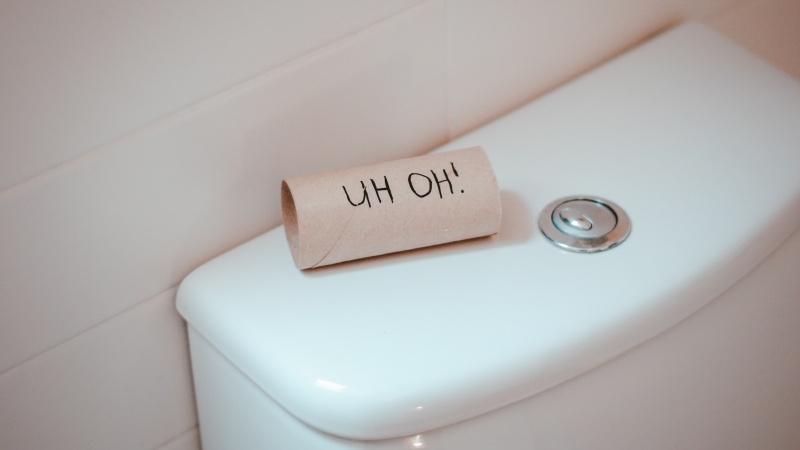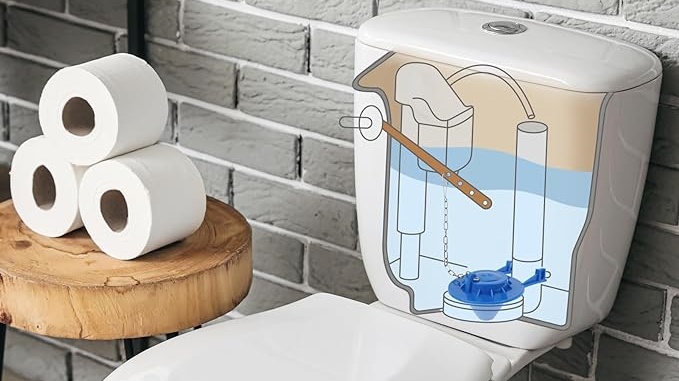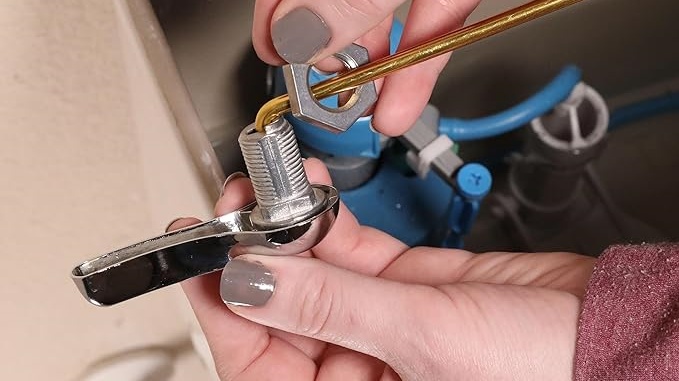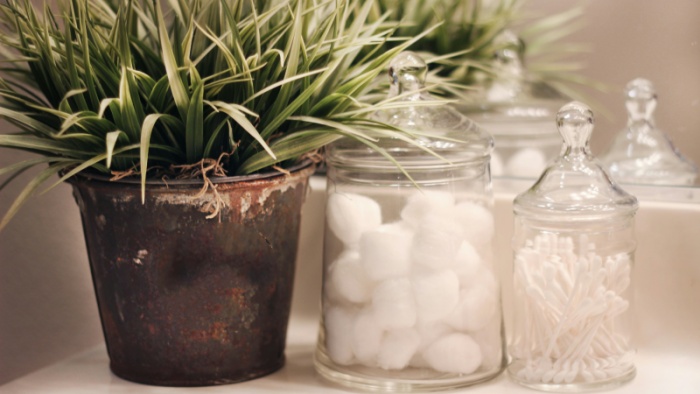
Blue Toilet Water:Is It Safe?
Blue toilet water, often seen as a sign of cleanliness, is usually the result of using those tank cleaning tablets. While they might appear to

Sometimes, when your toilet flushes slow, it can feel more like a sluggish stream than a powerful waterfall. This means you’re dealing with a weak flush, a situation that’s not only annoying but can also be embarrassing and somewhat messy. However, fret not, because in this article, we’re geared up to guide you through resolving this issue effectively.
When your toilet doesn’t complete its flush cycle, typical culprits are often a clog in the trap, a deteriorated flapper, obstructed rim jets, a malfunctioning float, or problems with the handle and chain.


To ensure your toilet continues to operate efficiently and to avoid future issues with slow flushing, here are some preventive maintenance tips:

Dealing with toilet flushes slow can be a nuisance, but with the right approach, it’s a problem that can be effectively managed.
By understanding the common causes of a weak flush and implementing the fixes we’ve outlined, from addressing clogs to checking the flapper, handle, chain, float, and rim jets, you can restore your toilet’s flushing efficiency.
Additionally, adhering to our preventive maintenance suggestions, including regular cleaning, checking internal components, avoiding harsh chemicals, conducting flush tests, installing a toilet light, and educating household members on proper toilet use, will go a long way in preventing future slow flush issues.
With these strategies in hand, you can ensure that your toilet performs optimally, keeping your bathroom experience hassle-free.
FAQ: Can a low water level in the toilet tank cause slow flushing?
Answer: Yes, a low water level in the toilet tank can lead to a weak flush. The water level should ideally be about an inch below the overflow tube. If it’s lower, adjust the float to increase the water level, ensuring sufficient water for an effective flush.
FAQ: How often should I replace the parts in my toilet tank to prevent slow flushing?
Answer: It’s recommended to inspect and potentially replace toilet tank components like the flapper and float every 3-5 years. Regular inspection will help identify wear and tear before it leads to slow flushing or other issues.
FAQ: Are there any signs that indicate my toilet is about to start flushing slowly?
Answer: Signs that a toilet may soon experience slow flushing include reduced flushing power, the toilet taking longer to refill, or water trickling into the bowl between flushes. These can indicate issues like partial clogs or worn-out components.
FAQ: Can hard water contribute to slow toilet flushing?
Answer: Yes, hard water can contribute to slow flushing due to the buildup of minerals in the rim jets and other components. Regular cleaning with vinegar can help prevent this buildup and maintain optimal flushing performance.
FAQ: Is it necessary to call a plumber for a slow flushing toilet, or can I fix it myself?
Answer: Many issues causing slow flushing, like clogs or worn-out parts, can be fixed with DIY methods. However, if the problem persists or you’re uncomfortable performing the tasks, it’s advisable to consult a professional plumber.


Blue toilet water, often seen as a sign of cleanliness, is usually the result of using those tank cleaning tablets. While they might appear to

How to unclog toilet is not often a thought until trouble strikes. When our toilet clogs or malfunctions, it becomes more than just a small

Contrary to common belief, your clean toilet isn’t the most bacteria-ridden place in your house. In fact, your smartphone, keyboard, or backpack harbor far more

Imagine this scenario: it’s the middle of the night, and you find yourself stumbling into your bathroom, half-asleep, seeking a bit of comfort in the

Sometimes, when your toilet flushes slow, it can feel more like a sluggish stream than a powerful waterfall. This means you’re dealing with a weak

Blue toilet water, often seen as a sign of cleanliness, is usually the result of using those tank cleaning tablets. While they might appear to

How to unclog toilet is not often a thought until trouble strikes. When our toilet clogs or malfunctions, it becomes more than just a small

Contrary to common belief, your clean toilet isn’t the most bacteria-ridden place in your house. In fact, your smartphone, keyboard, or backpack harbor far more
Copyright © 2024 toiletlighton. All Rights Reserved.